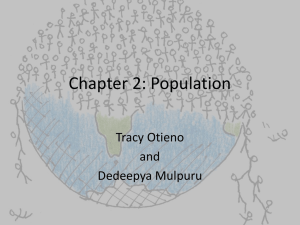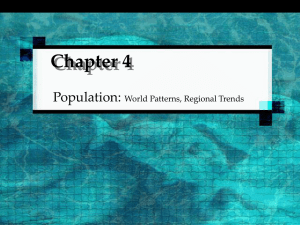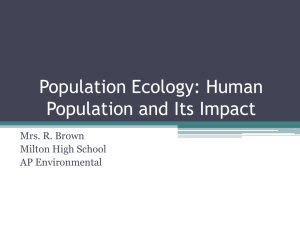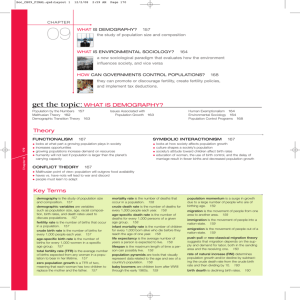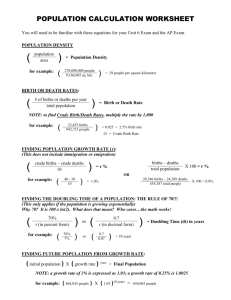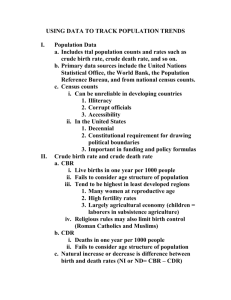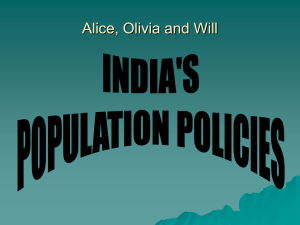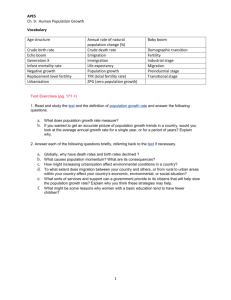Population and Migration Studies: Worksheet 1
advertisement
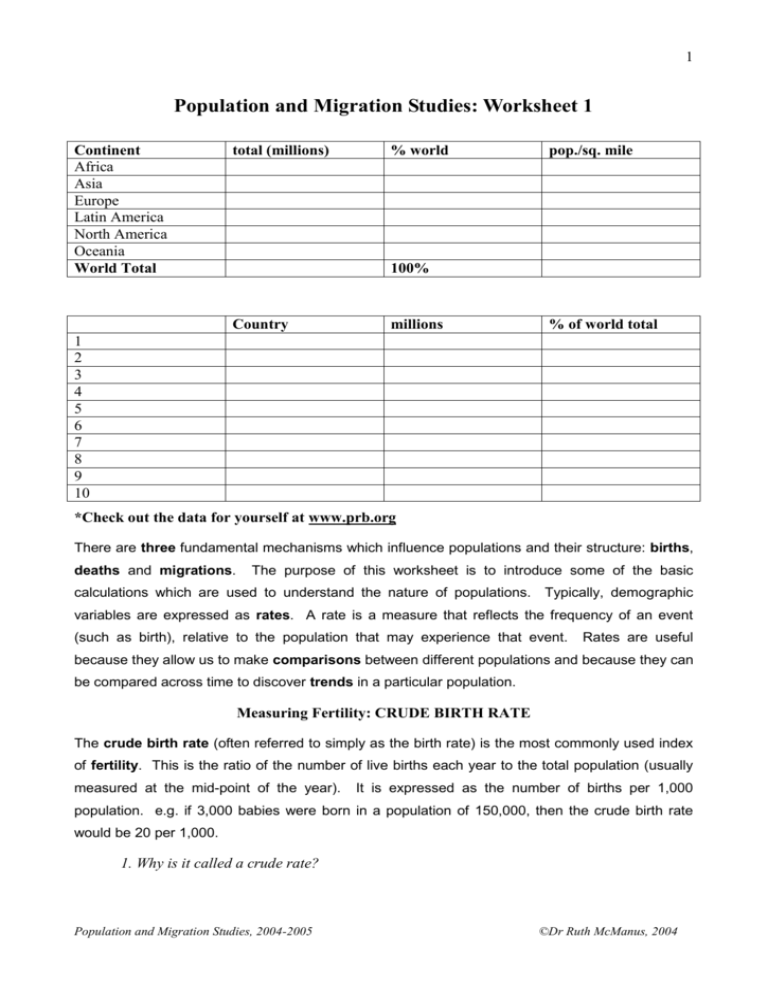
1 Population and Migration Studies: Worksheet 1 Continent Africa Asia Europe Latin America North America Oceania World Total total (millions) % world pop./sq. mile 100% Country millions % of world total 1 2 3 4 5 6 7 8 9 10 *Check out the data for yourself at www.prb.org There are three fundamental mechanisms which influence populations and their structure: births, deaths and migrations. The purpose of this worksheet is to introduce some of the basic calculations which are used to understand the nature of populations. Typically, demographic variables are expressed as rates. A rate is a measure that reflects the frequency of an event (such as birth), relative to the population that may experience that event. Rates are useful because they allow us to make comparisons between different populations and because they can be compared across time to discover trends in a particular population. Measuring Fertility: CRUDE BIRTH RATE The crude birth rate (often referred to simply as the birth rate) is the most commonly used index of fertility. This is the ratio of the number of live births each year to the total population (usually measured at the mid-point of the year). It is expressed as the number of births per 1,000 population. e.g. if 3,000 babies were born in a population of 150,000, then the crude birth rate would be 20 per 1,000. 1. Why is it called a crude rate? Population and Migration Studies, 2004-2005 ©Dr Ruth McManus, 2004 2 Measuring Mortality: CRUDE DEATH RATE The crude death rate is the number of deaths per 1,000 members of a given population. It may be calculated for the population at the mid-point of the year or at the beginning of the year. 2. What are the disadvantages of using crude rates to measure mortality and fertility? Population Growth: NATURAL INCREASE Natural increase is a simple measure of population growth which examines the differences between births (fertility) and deaths (mortality) in a given group. It is usually determined by subtracting the crude death rate from the crude birth rate. Natural increase is generally expressed as a percentage figure. e.g. an annual natural increase of 0.8 means that a country is increasing its population by 0.8 per cent each year. If the death rate is greater than the birth rate, then a population may be experiencing natural decrease. 3. What aspect of population growth or decline is not measured by the natural increase calculation? Births and Deaths in the Republic of Ireland, 1995 – 2002 (selected years) Source: CSO, 2004 1995 1998 2000 2002 Births 48,787 53,600 54,239 60,521 Deaths 32,259 31,400 31,115 29,348 3,601,300 3,704,900 3,786,900 3,917,203 Total Population (estimated) 4. Calculate the Birth and Death Rates for Ireland in each of the four years 5. Calculate the Natural Increase for Ireland in each of the four years. 6. Write a short paragraph outlining the population changes experienced over the period from 1995 to 2002, based on this data. The main source of population data for the Republic of Ireland is the Central Statistics Office: www.cso.ie. Visit the CSO website and find the following information. You may have to dig deep, but most answers will be either in Demography and Labour Force or the Vital Statistics section. 8. What was the population of Ireland in 1901? 9. How many Irish speakers aged 3 years and over were enumerated in Connacht in 1961? 10. In which census year of the 20th century was the lowest total population recorded in Ireland? *What is the most important point to remember from today’s lecture? Population and Migration Studies, 2004-2005 ©Dr Ruth McManus, 2004
